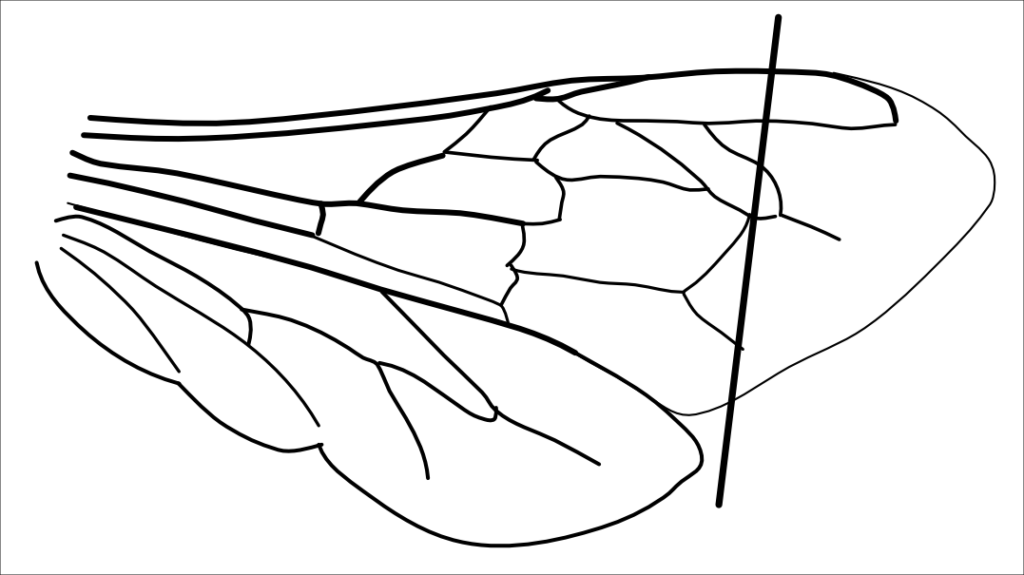Stan and Mike’s Cut-out Video + Nick and John’s ‘To Clip or Not to Clip’
April meeting, held at Kilmington Village Hall. 30+ attendees.
The evening started with Stan Wroe and Mike Jones giving an illustrated description of their bee cut-out adventure. Stan was originally alerted to bees going in and out of a large out-building by the owners in February 2021, and decided to attempt a cut-out in late March before the established colony grew too big. Mike was a novice beekeeper at the time.
Stan outlined his approach to both the property owner and the way he and Mike had planned and prepared for the event. The owner was made aware that there may be some damage to the fabric of the building and it would be his responsibility to carry out repairs.
The kit consisted of a National brood box with empty frames to fasten the cut-out pieces of comb into, a large sheet to spread on the ground, a large number of rubber bands, and a small panel saw to cut the comb pieces to size. Just in case, they took a spare nuc box with more empty frames plus more rubber bands. The tools included hammers, chisels, screw drivers, Stanley knife and saw, to facilitate opening-up the building.
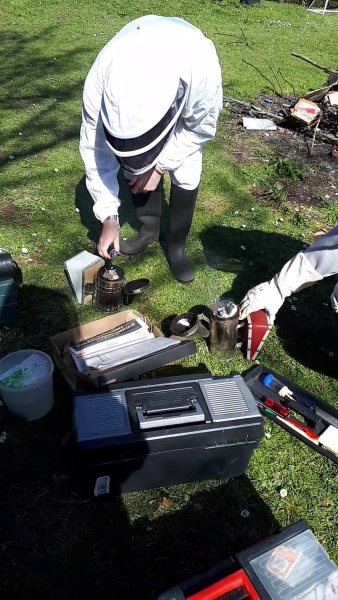
Prepare kit
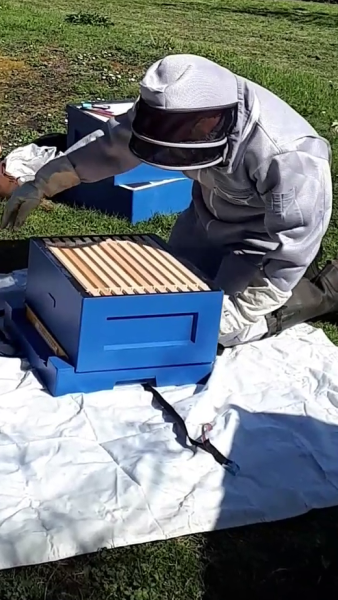
More kit
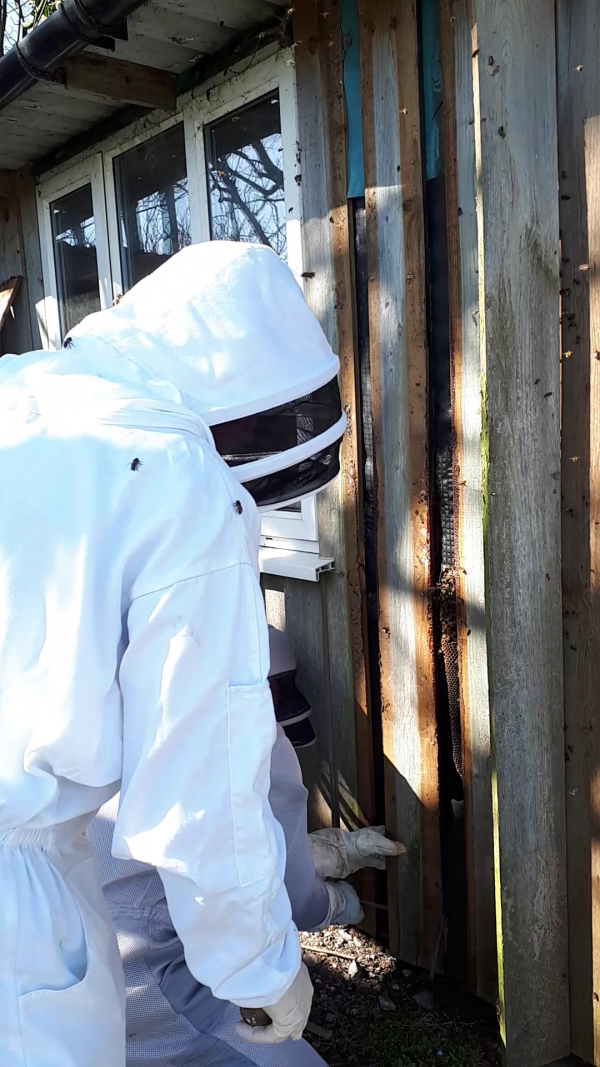
Remove planks
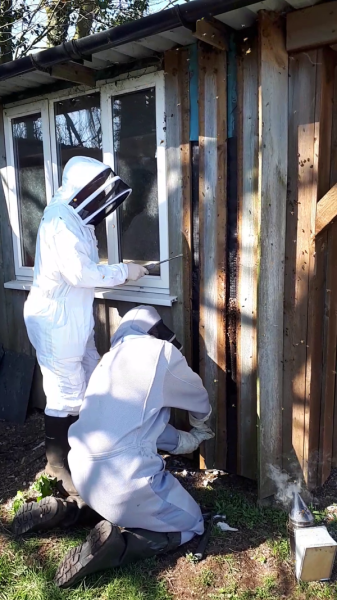
Good progress
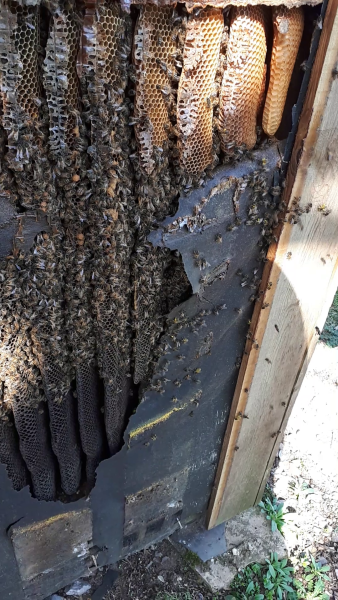
1st glimpse
The images show the stages of the operation. They are taken from the video that was recorded by Mike’s wife, Julie, who had never seen inside a bee hive before or worn a suit and veil. She very bravely got up close to the bees, and was thoroughly fascinated by it all.
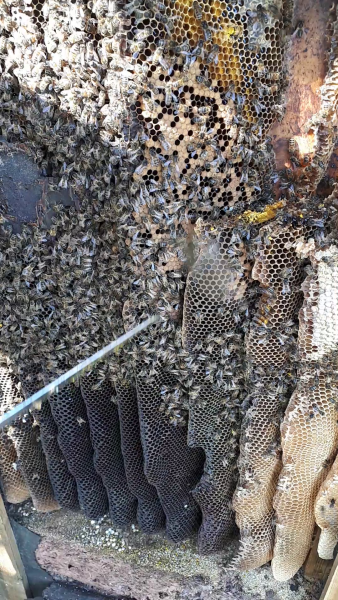
The nest
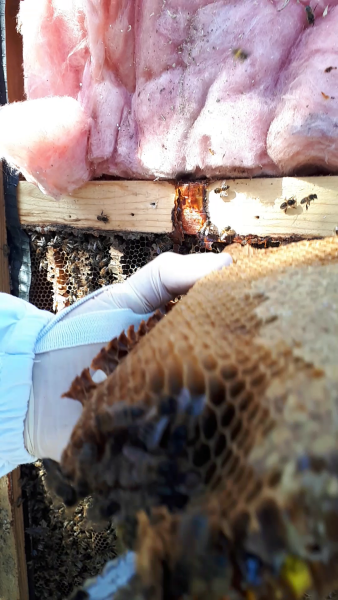
Start cut-out
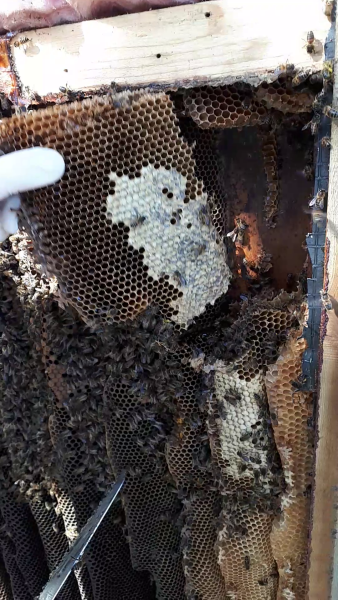
Section of comb
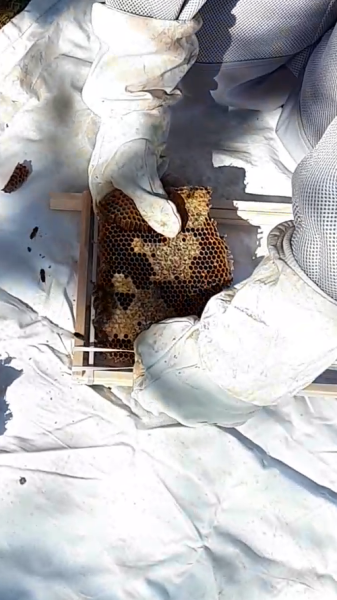
Transfer to frame
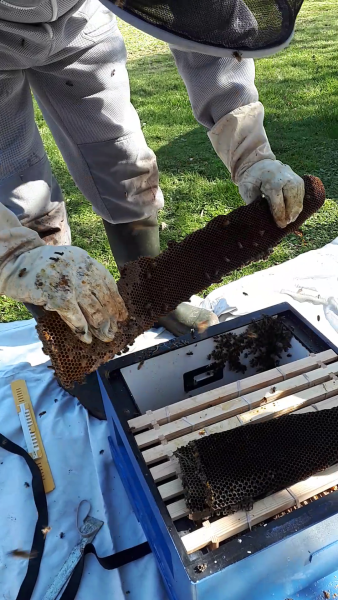
In brood box
For the most part, the bees were well behaved. This certainly made life easier for Mike who was responsible for fastening the comb pieces into the frames. Stan also cut out some clean pieces of comb for the owner’s son, aged about 10, who had taken a keen interest in the operation. He took the comb and some video clips to school and was able to give a short presentation to his class.
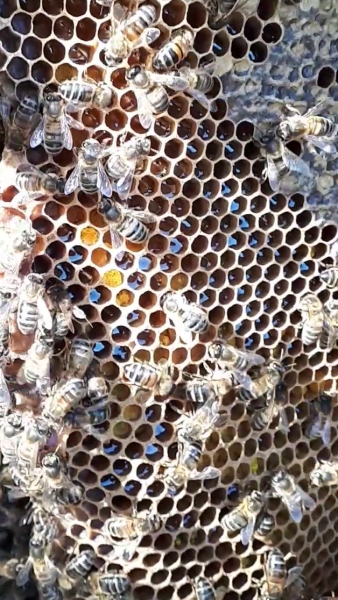
Honey comb
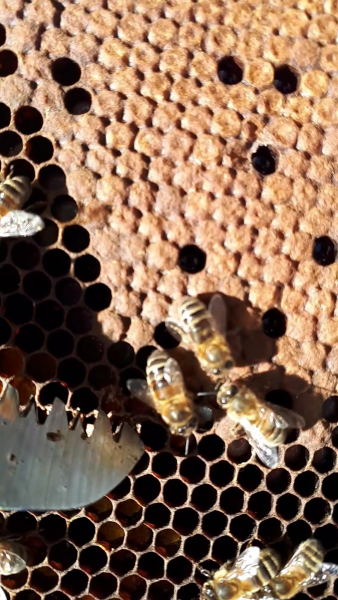
Brood comb
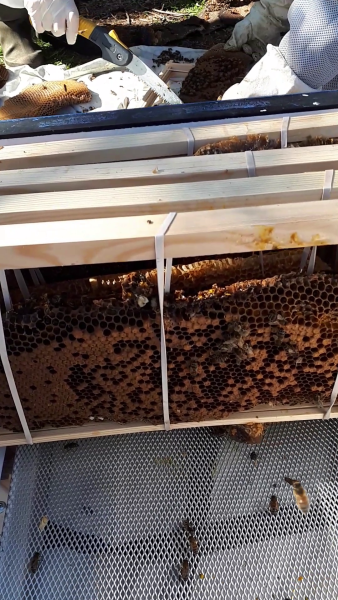
Comb secured
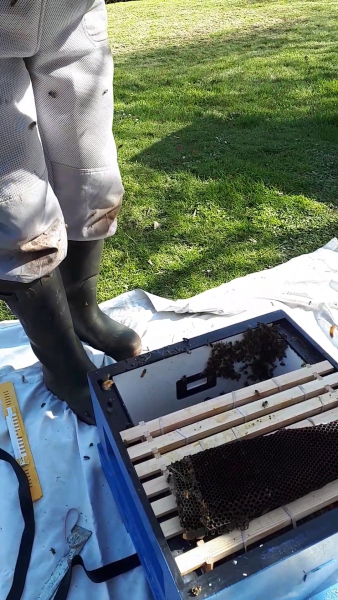
Transfer to hive
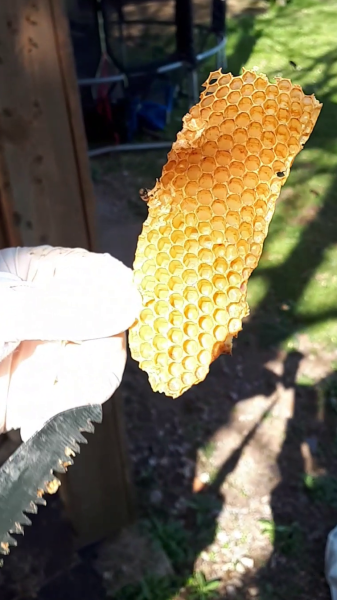
Comb sample for son
When the brood box was full, the bees could be seen fanning at the hive entrance, indicating that they had probably managed to save the queen, although no one had spotted her during the transfer. The new hive was transported to Mike’s apiary, where it recovered from the ordeal and thrived. It turned out to be a good tempered and moderately productive colony.
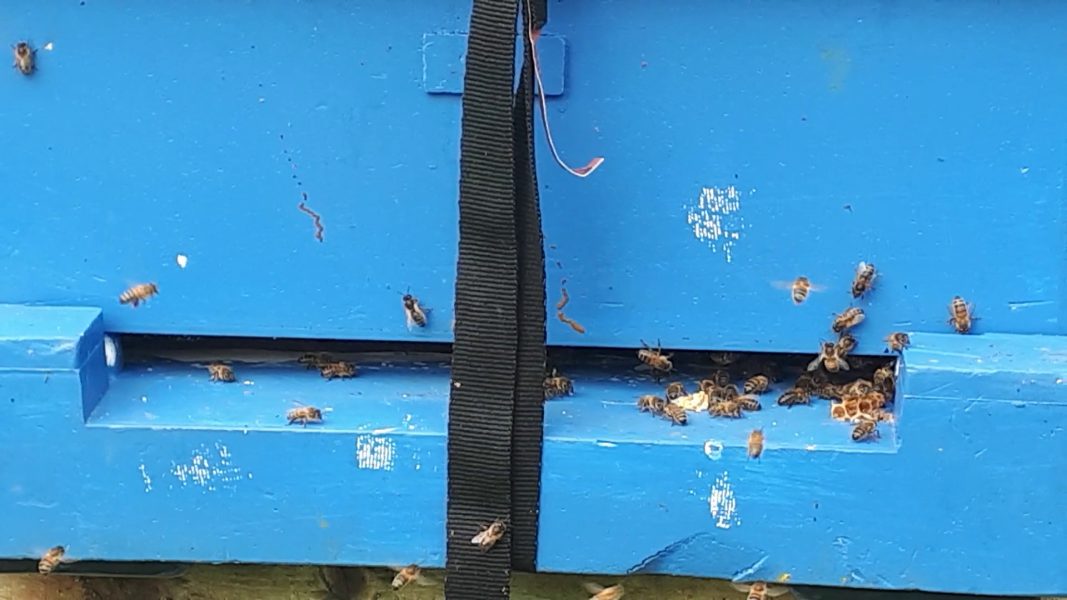
Job done!
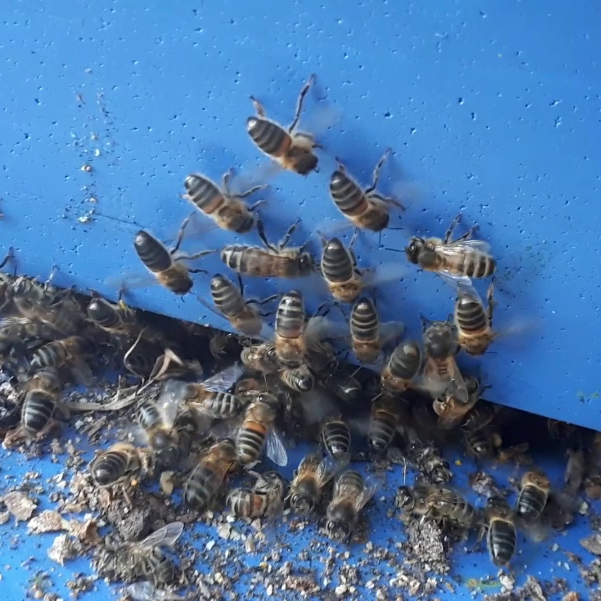
Bees fanning
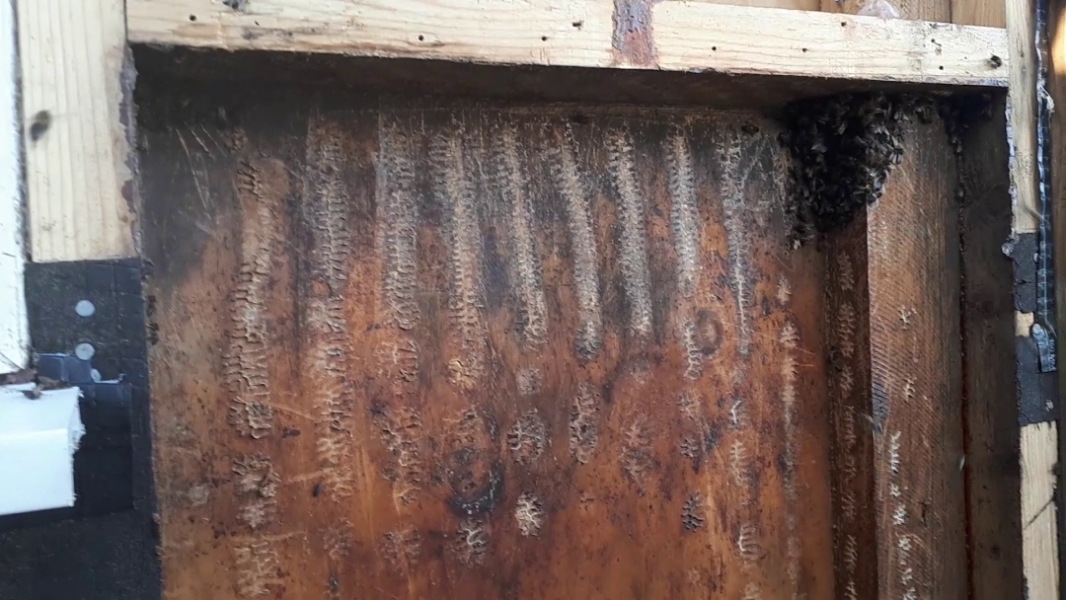
Nest site cleaned up
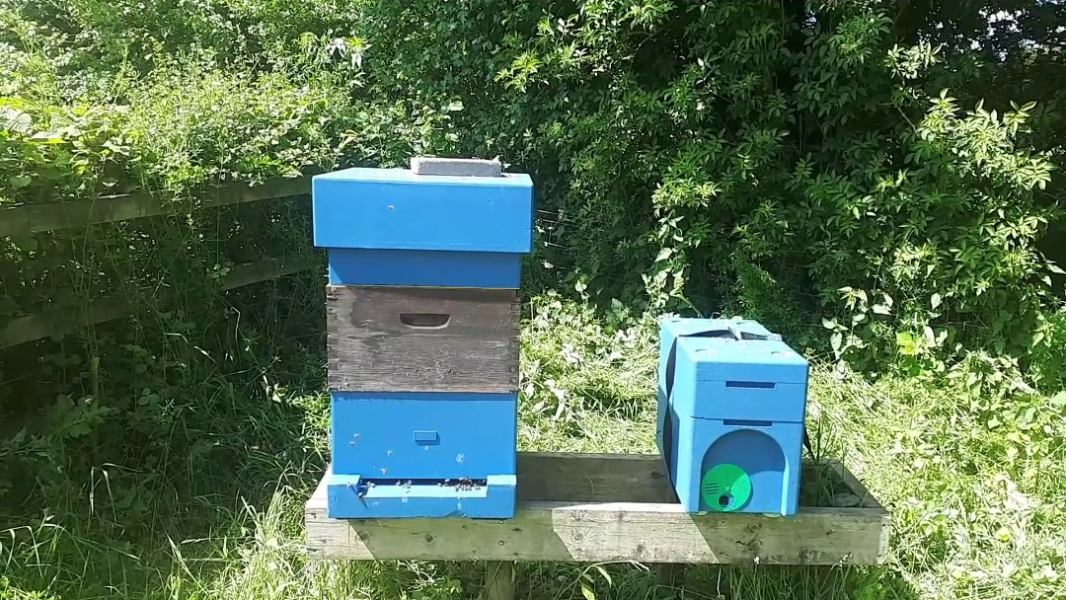
Transfer to apiary
Stan’s take-home message to new beekeepers:
- Volunteer to help swarm collectors – you’ll be surprised how much of what you learn on the beginner’s course stands you in good stead.
- Swarm collectors are often happy to have an eager volunteer help them.
- Interaction with the public is a great way of explaining how bees live – you already know so much more about bees than they do.
To Clip or Not to Clip
Nick started the discussion by using a quote from Professor Tom Seeley:
87% of wild colonies attempt to swarm every year.
Of these swarms, only 23% will survive the winter.
In other words, expect your bees to swarm, and the quality of caught swarms can be very variable.
Basic facts
It is possible for an unclipped queen to swarm 4 days after you last inspected the colony! However, with a clipped queen you will have a minimum of 11 days before a swarm can emerge successfully. You will have lost your original queen, but you will not have lost your honey crop.
This means you can do fewer inspections, requiring less work, or you can have more colonies using the same amount of work.
Either way, it is less risky building up powerful production colonies, which should give more honey per unit of time and effort.
By going down the clipping route you avoid nuisance swarms and the need to collect them, and you will improve your handling skills, something that is required for the General Husbandry assessment.
Nick likened beekeeping to a spectrum from wild bees on one side to bee farmers on the opposite side. Where you fit onto the spectrum depends on your aims, how many colonies you have, and your skill level.
John took the view that if you wish to mark and/or clip then you should make sure you can achieve your aim without harming or endangering your bees. He related three anecdotes concerning apiary demonstrations by experienced beekeepers that had gone wrong.
Marker pen flooding
Too much ink will clog the spiracles, and possibly cover eyes, antennae and mouth parts. The queen is unlikely to survive. Always check the pen before use and shake off any surplus ink before approaching the queen.
Queen goes into ‘shock’
Clipping the queen’s wing can sometimes cause ‘shock’ symptoms, such as quivering. If this happens, keep the queen warm and return her to the brood box as soon as she recovers.
Queen flies off
If this happens, stay still, don’t move equipment and wait until she (hopefully) returns. Close the hive when she does. Why does it happen? A newly mated queen can still fly strongly, so wait until your new queen is laying well before attempting to mark or clip.
A show of hands suggested the majority of the audience did not clip queens.
